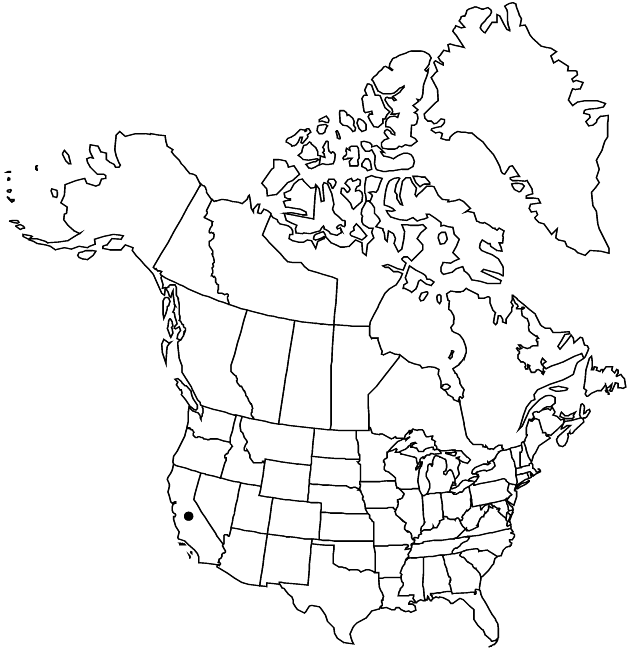Cirsium fontinale var. campylon
Phytologia 73: 313. 1992.
Common names: Mt. Hamilton thistle
EndemicConservation concern
Basionym: Cirsium campylon H. Sharsmith Madroño 5: 85, fig. 1. 1939
Revision as of 20:00, 29 July 2020 by imported>Volume Importer
Basal leaves: longer spines 4–15 mm, distal faces equally glandular and tomentose. Cauline leaves: longer spines 10–18 mm. Distalmost stem bracts typically separated from heads. Phyllaries 65–85, 25–35 of them reflexed; apical spines 3–6 mm; marginal spines usually absent. Cypselae 3.4–4.1 mm. 2n = 34.
Phenology: Flowering spring–summer (Apr–Aug).
Habitat: Serpentine seeps in areas of chaparral, valley grasslands, foothill woodlands
Elevation: 300–800 m
Discussion
Of conservation concern.
Variety campylon is endemic to the Mt. Hamilton Range in Alameda, Santa Clara, and Stanislaus counties.
Selected References
None.
Lower Taxa
None.
"ciliolate" is not a number."fine" is not a number."less" is not a number.
... more about "Cirsium fontinale var. campylon"
tomentose +
tomentose +
short-tailed +
introrse +
connate +
long +
innermost +
puberulent +
dilated +
scarious +
linear-oblong +
hirsute +
papillate +
angled +
continuous +
petiolate +
absent +
appressed +
auriculate-decurrent +
strongly undulate;shallowly deeply pinnatifid +
entire;erose +
leafy +
reduced +
spreading +
hairy +
several;many +
barbellate +
many +
coarse +
absent +
taprooted +
woody +
Mt. Hamilton thistle +
actinomorphic +
bilateral +
monomorphic +
not ribbed +
brownish +
glabrous +
3.4mm;4.1mm +
bractlike +
reduced +
tomentose +
Calif. +
straight +
eglandular +
green +
distinct +
proximal +
25;200 +
bisexual +
dispersed +
discoid +
singly +
indeterminate +
nodding +
terminal +
few;many +
homogamous +
flattened +
surrounding +
campanulate;hemispheric +
numerous +
coarse +
fibrous +
bristly-dentate +
alternate +
bristle-tipped +
? (?) +
scarious +
absent +
appressed +
2-carpellate +
inferior +
attached +
anatropous +
persistent +
falling +
tough +
thick +
absent +
connate +
imbricate +
persistent +
distinct +
herbaceous +
weakly to strongly +
connate +
stigmatic +
distributed +
reduced +
Phytologia +
1992 +
absent +
epaleate +
flat;convex +
glutinous +
fibrous +
tawny;white +
triangular +
exalbuminous +
modifed +
6;10 +
subequal +
alternate +
separated +
erect +
2-branched +
ringed +
enlarged +
elongate +
Cirsium fontinale var. campylon +
Cirsium fontinale +
variety +
cylindric +
expanded +
dentate +
bristly-dentate to coarsely +
arachnoid +
fine +
long +
bent +
perennial +
monocarpic +
spiny-margined +
broad +
